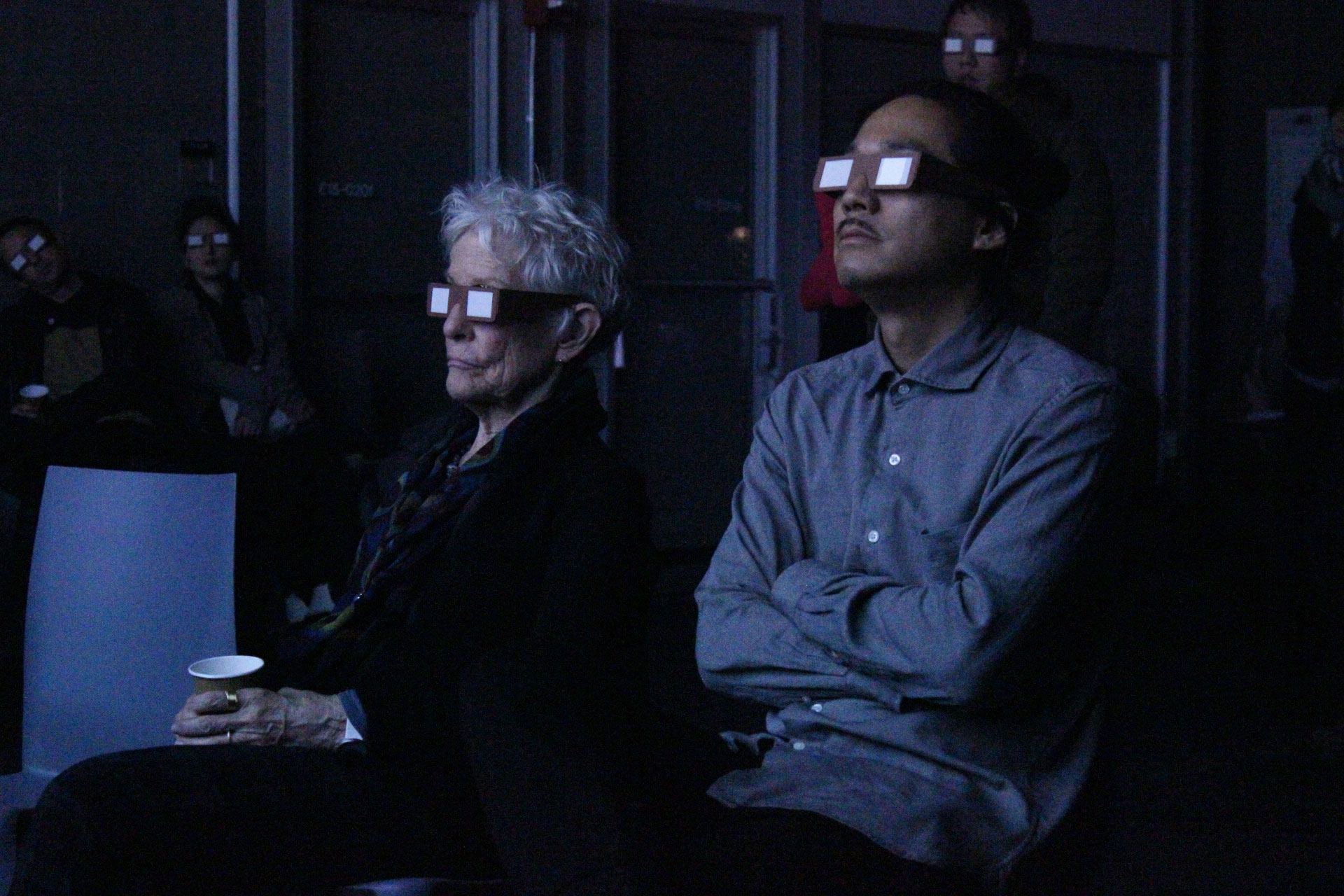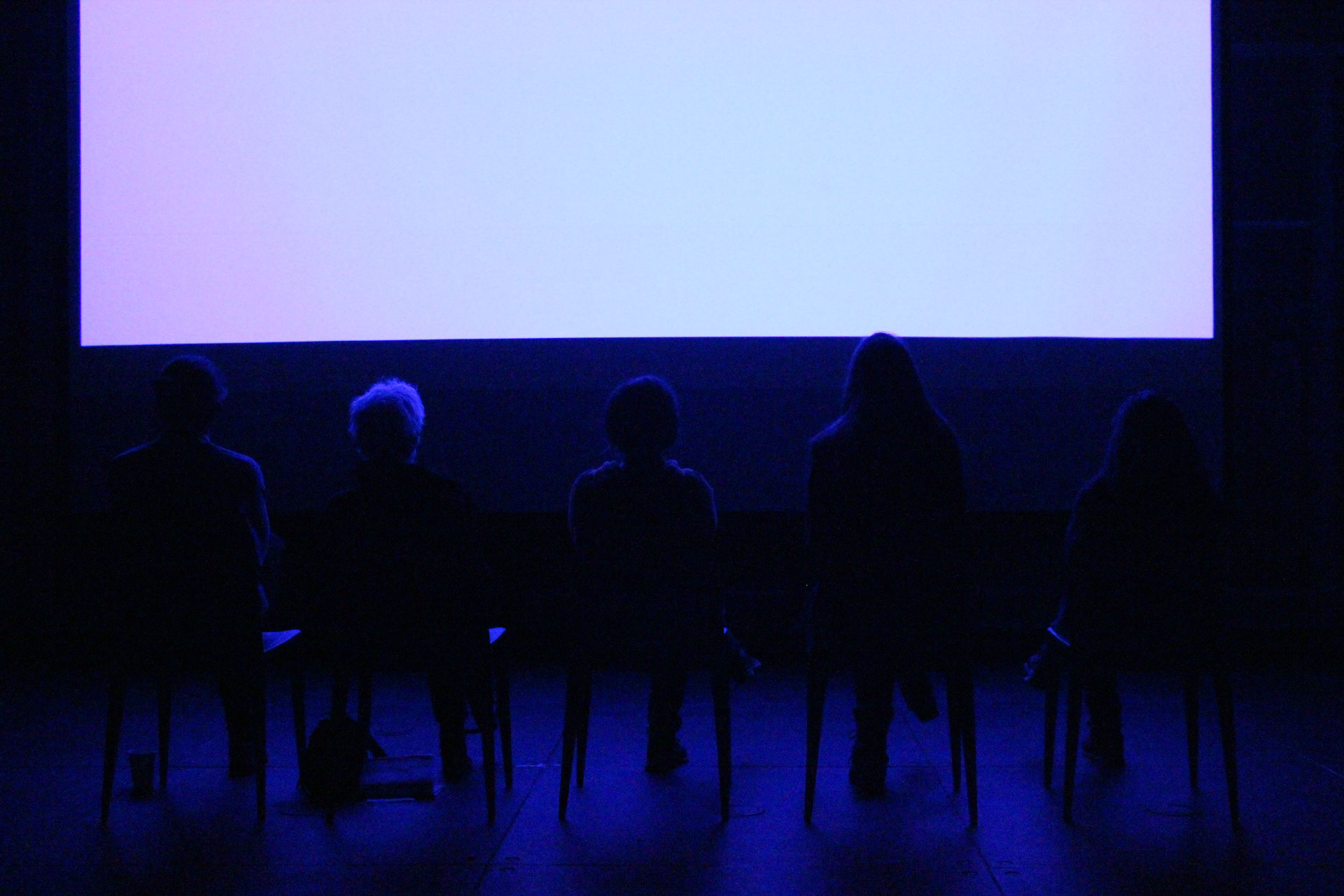Flood: a Sonic Ganzfeld Experiment
Flood revisits one of the visual experiments of James Turrell and Robert Irwin during their collaboration for the “Art & Technology” initiative at Los Angeles County Museum of Art (LACMA) in 1969.
Dimensions: variable
Materials: projection screen, custom-made spectacles
Technical: video projector(s), motion graphics, acetate backlit film.

Ganzfeld, German for “entire [visual] field” — a concept now central to the earlier work of James Turrell — describes the unsettling sensation of total visual sensory deprivation, often experienced by arctic explorers and pilots navigating dense fog and “blinding” snow storms. When everything in the visual field is the same color and brightness, the visual system shuts down. In the homogenous visual field, white = black = “nothing.” When this occurs for an extended period, the viewer could become subject to phantasmagoric hallucinations, or so-called “prisoner’s cinema.”
Viewers wear custom made “goggles” made from acetate back-lit projector film, and are seated approximately 7 feet from a large screen, where they view a succession of luminous, vividly colored planes of color, emanating from an overhead projector. The bright colors flicker and shimmer in a rhythmic pace that echoes a soundtrack made from sonorous low frequency sounds and barely audible high frequencies.
Traditionally, the ganzfeld effect is experienced in an environment with no sound, but the addition of a sound score to the visuals of Flood places the viewer within a multi-sensory condition that explores the possible synthesis of audio- and visual connections.
